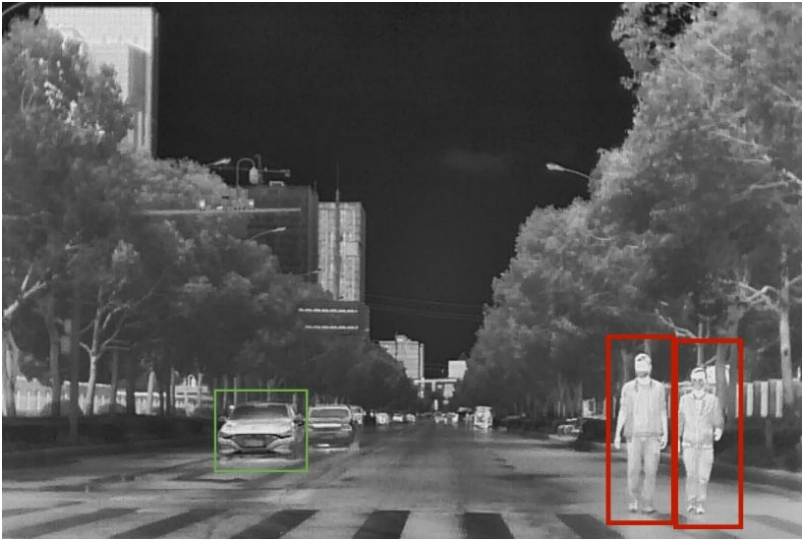Table of Contents
1. Introduction: Why Infrared PTZ Cameras Matter
2. Traffic Monitoring: Smarter Road Safety
3. Public Security: Safer Cities
4. Industrial Monitoring: Preventing Hidden Risks
5. Wildlife Observation: Research Without Disturbance
6. Sports & Live Events: Enhancing Experience & Safety
7. Home Security: Protection Anytime, Anywhere
8. Future Trends of Infrared PTZ Cameras
9.Conclusion & Call-to-Action
1. Introduction: Why Infrared PTZ Cameras Matter
Surveillance technology has rapidly evolved in the past decade. Among the most versatile solutions today are infrared PTZ cameras, combining infrared imaging with pan–tilt–zoom (PTZ) capabilities. Unlike fixed cameras, PTZ systems can rotate 360°, tilt to cover blind spots, and zoom in to capture fine details—even at night or in poor lighting conditions.
This makes them an essential tool for diverse applications: from monitoring crowded city intersections to observing wildlife in remote forests. According to industry reports, the global vieo surveillance market is expected to surpass USD 80 billion by 2030, with infrared PTZ cameras playing a critical role in driving this growth.
2. Traffic Monitoring: Smarter Road Safety
The Challenge:
Urban traffic management faces growing pressure from increasing vehicle numbers. Accidents at night or in bad weather often go undetected until too late, while congestion requires real-time monitoring to manage flow.
How Infrared PTZ Helps:
Infrared PTZ cameras, installed at intersections and highways, allow traffic authorities to monitor large areas in real time. The infrared sensors ensure clear images in darkness or fog, while zoom features capture license plates and pedestrian movement.
Real-World Example:
In a smart city project in Singapore, PTZ cameras connected to AI-driven traffic systems reduced emergency response time by 25%. By rotating between multiple lanes, they detected accidents faster and helped reroute traffic efficiently.
3. Public Security: Safer Cities
The Challenge:
Public squares, metro stations, and crowded streets often face risks of theft, vandalism, or violent incidents. Police forces need reliable, high-quality surveillance to deter crime and collect evidence.
How Infrared PTZ Helps:
Infrared PTZ cameras allow wide-area coverage with fewer installations. Operators can zoom into suspicious activity without alerting potential offenders. Infrared capability ensures video quality in low-light streets and alleys.
Real-World Example:
In London, PTZ cameras played a key role in monitoring public events. Footage captured with infrared PTZ systems provided crucial evidence in solving several robbery cases, helping authorities maintain public confidence.
4. Industrial Monitoring: Preventing Hidden Risks
The Challenge:
Factories, refineries, and energy plants deal with hazardous environments—high heat, chemical leaks, and heavy machinery failures can cause catastrophic accidents. Traditional cameras may not detect subtle risks.
How Infrared PTZ Helps:
Infrared PTZ systems can continuously scan production lines and storage areas. They detect overheating motors, gas emissions, or temperature anomalies invisible to the human eye. By covering wide zones, one PTZ camera often replaces multiple fixed cameras, reducing costs.
Real-World Example:
At a chemical plant in Germany, PTZ thermal cameras detected abnormal heat in a pipeline valve. Early detection prevented a potential leak, saving millions in damage control.
5. Wildlife Observation: Research Without Disturbance
The Challenge:
Studying wildlife requires observing natural behavior without human interference. Traditional field studies often disturb animals and limit observation to daytime.
How Infrared PTZ Helps:
Infrared PTZ cameras allow researchers to watch animals remotely, day or night. They rotate to follow herds, zoom in on nesting behaviors, and capture long-term data on migration or population trends.
Real-World Example:
The Serengeti National Park in Africa uses PTZ systems to monitor lion populations. Researchers discovered new hunting behaviors by analyzing night-time footage that would otherwise remain unseen.
6. Sports & Live Events: Enhancing Experience & Safety
The Challenge:
Large-scale events need to balance
audience experience with
safety management. Traditional broadcast cameras can cover performances but not security threats in the crowd.
How Infrared PTZ Helps:
Infrared PTZ cameras track athletes or performers in real-time, zooming in on critical moments for broadcast. At the same time, operators use them to monitor entrances, crowd movement, and backstage areas for security.
Real-World Example:
During the Tokyo Olympics, PTZ cameras were deployed not only for broadcasting but also to ensure safety in venues with limited staff due to COVID-19 restrictions.
7. Home Security: Protection Anytime, Anywhere
The Challenge:
With rising concerns about burglary and property safety, homeowners seek solutions that provide peace of mind without expensive installations.
How Infrared PTZ Helps:
Infrared PTZ cameras monitor gardens, driveways, and backyards with one device. Families receive mobile alerts if suspicious movement is detected. Unlike fixed cameras, PTZ devices reduce blind spots, making them cost-effective for households.
Real-World Example:
Smart home systems in the U.S. now integrate PTZ cameras with AI assistants, allowing homeowners to rotate cameras via voice command or mobile app.
8. Future Trends of Infrared PTZ Cameras
AI Integration: Cameras will detect abnormal behaviors (e.g., loitering or aggressive motion) automatically.
5G Connectivity: Enables ultra-low-latency monitoring for remote operations, useful in autonomous transport and drone systems.
Smarter Analytics: Cloud-based platforms will allow predictive maintenance in industries and advanced wildlife conservation analytics.
Analysts predict that by 2030, more than 60% of surveillance systems will include AI-enabled PTZ infrared cameras, expanding beyond traditional security into healthcare and environmental research.
9. Conclusion & Call-to-Action
Infrared PTZ cameras are no longer niche tools. From ensuring safer roads to protecting endangered species, they are shaping how we observe, manage, and secure the world around us.
Whether you are a city planner, industrial manager, wildlife researcher, or homeowner, adopting PTZ infrared solutions means combining clarity, coverage, and reliability in one system.
Looking to implement infrared PTZ cameras for your project? Contact us for tailored solutions and expert guidance.









